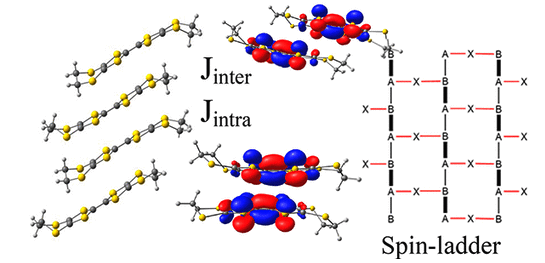The magnetic behavior and electric properties of the hybrid radical salt [BEDT-TTF]2[CuCl4] have been revisited through extended experimental analyses and DDCI and periodic DFT plane waves calculations. Single crystal X-ray diffraction data have been collected at different temperatures, discovering a phase transition occurring in the 250–300 K range. The calculations indicate the presence of intradimer, interdimer, and organic–inorganic π–d interactions in the crystal, a magnetic pattern much more complex than the Bleaney–Bowers model initially assigned to this material. Although this simple model was good enough to reproduce the magnetic susceptibility data, our calculations demonstrate that the actual magnetic structure is significantly more intricate, with alternating antiferromagnetic 1D chains of the organic BEDT-TTF+ radical, connected through weak antiferromagnetic interactions with the CuCl42– ions. Combination of experiment and theory allowed us to unambiguously determine and quantify the leading magnetic interactions in the system. The density-of-states curves confirm the semiconductor nature of the system and the dominant organic contribution of the valence and conduction band edges. This general and combined approach appears to be fundamental in order to properly understand the magnetic structure of these complex materials, where experimental data can actually be fitted from a variety of models and parameters.
